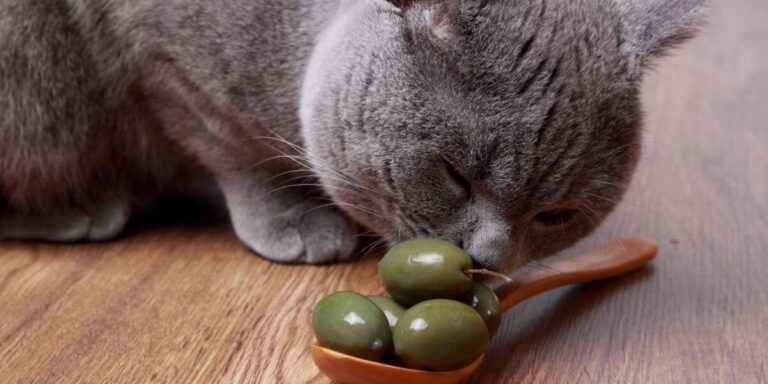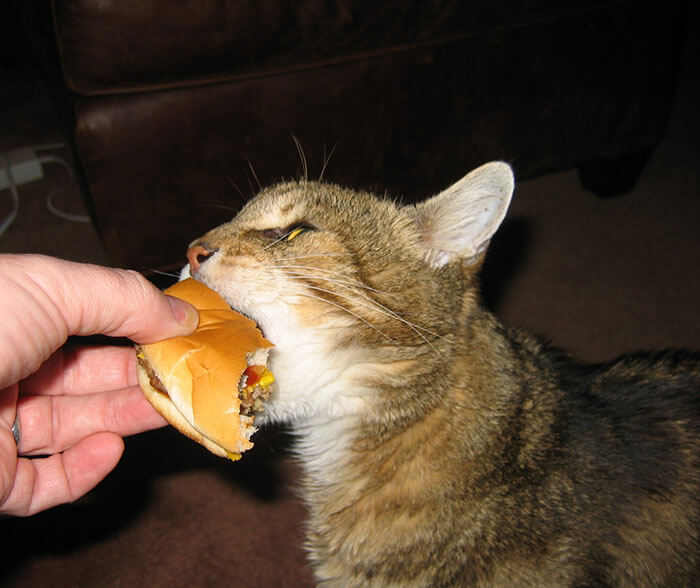Cat Pregnancy: Signs, Stages & Essential Care Guide
Caring for a pregnant cat requires knowledge, patience, and understanding to ensure both mother and kittens stay healthy throughout the journey. This guide provides all the essential information cat owners need to support their cats during pregnancy, including dietary needs, trimester stages, and labor preparation. With this expert guide, you’ll learn how to care for your cat and prepare for the arrival of new kittens.
Contents
- 1 Cat Pregnancy Timeline: Stages and Key Changes
- 2 First Trimester: Days 1–21
- 3 Second Trimester: Days 22–42
- 4 Third Trimester: Days 43–63
- 5 Pregnant Cat Nipples Vs Normal Cat Nipples
- 6 How many months is a cat pregnancy?
- 7 What are the first signs of a pregnant cat?
- 8 How do I know my cat is ready to give birth?
- 9 What does a 5-week pregnant cat look like?
- 10 Can I touch newborn kittens?
- 11 How many kittens will my cat have for the first time?
- 12 How to tell if a cat is pregnant by looking at nipples?
- 13 What to feed a pregnant cat?
- 14 When can male cats mate?
- 15 How long is a cat in labor?
- 16 How to take care of a pregnant cat?
- 17 How fast do cats reproduce?
- 18 How to Tell if a Cat Is Pregnant
- 19 How to Tell How Far Along Your Cat Is
- 20 Caring for a Pregnant Cat
- 21 Creating a Safe, Comfortable Nest
- 22 Diet for a Pregnant Cat
- 23 Parasite Prevention and Vaccinations
- 24 Monitoring Health and Signs of Complications
- 25 Preparing for Labor and Delivery
- 26 Postpartum Care for Cats and Kittens
- 27 Conclusion
Cat Pregnancy Timeline: Stages and Key Changes
A typical cat pregnancy lasts about 63-65 days, or roughly two months, and is divided into three trimesters. Each stage has unique signs and developments that indicate how far along the pregnancy is. Understanding these stages helps pet owners track the queen’s progress and recognize any potential concerns early.

First Trimester: Days 1–21
During the first three weeks of pregnancy, most physical signs are subtle:
- Physical Signs: Often, the only visible change is a slight increase in appetite. Around day 16-20, some cats experience “pinking up,” where nipples become more pink and prominent.
- Behavioral Changes: Queens may become more affectionate and docile as their bodies begin adjusting to the pregnancy.
- Veterinary Milestones: A vet may detect pregnancy through palpation (feeling for fetuses in the abdomen) at around 2-3 weeks.
Second Trimester: Days 22–42
As the pregnancy progresses, the queen’s physical and behavioral signs become more pronounced:
- Physical Signs: The cat’s belly starts to grow, and her nipples will continue to enlarge. Appetite usually increases significantly.
- Behavioral Changes: Queens may be calmer, clingy, or prefer to rest more.
- Veterinary Milestones: By the third to fourth week, a vet can confirm the pregnancy through ultrasound, and kitten heartbeats become visible. These exams provide valuable information about the number and health of kittens.
Third Trimester: Days 43–63
In the final trimester, changes become more obvious as the queen nears labor:
- Physical Signs: A visibly distended belly and prominent nipples are common. Appetite might decrease as kittens occupy more abdominal space.
- Behavioral Changes: Queens may start nesting behavior, often seeking secluded, quiet spots for giving birth. Increased grooming, especially around the belly and vulva, is also normal.
- Veterinary Milestones: Around six weeks, a vet can perform an X-ray to see kitten skeletons, helping to determine the expected litter size.
Pregnant Cat Nipples Vs Normal Cat Nipples

How many months is a cat pregnancy?
A cat’s pregnancy typically lasts about two months (63-65 days). This means that from conception to delivery, the entire process is approximately 9 weeks or just over two months. It’s helpful to consult a veterinarian for guidance, as they can monitor the stages of pregnancy and provide insights specific to your cat.
What are the first signs of a pregnant cat?
In the early stages of pregnancy, you may notice:
- Nipple Changes: “Pinking up” occurs when the cat’s nipples become larger, pinker, and more prominent (usually around 15-18 days after conception).
- Increased Appetite: Pregnant cats often have a stronger appetite as they begin to require more nutrients.
- Behavioral Changes: Cats may become more affectionate or show signs of restlessness as hormones shift. If you suspect pregnancy, consult a vet for confirmation through a physical exam, ultrasound, or X-ray.
How do I know my cat is ready to give birth?
When a cat is close to giving birth, she will show several signs, including:
- Nesting Behavior: Seeking a quiet, private area to give birth.
- Decreased Appetite: Many cats stop eating 24 hours before labor.
- Restlessness and Vocalization: She may pace, scratch, and vocalize more than usual.
- Increased Grooming: Especially around her genital area, as her body prepares for delivery. When you notice these signs, it’s helpful to keep her in her chosen area to reduce stress. If she seems uncomfortable or labor stalls, consult your vet immediately.
What does a 5-week pregnant cat look like?
By the fifth week of pregnancy:
- Visible Belly: The cat’s abdomen will appear more rounded, especially near the back.
- Enlarged Nipples: Nipples become more prominent as they prepare for nursing.
- Increased Appetite and Weight: Most cats start gaining visible weight by this time. Regular veterinary visits during pregnancy can ensure everything is progressing as expected.
Can I touch newborn kittens?
It’s generally safe to gently touch newborn kittens after birth, especially if the mother allows it. However:
- Minimize Handling: Avoid excessive handling for the first 1-2 weeks to avoid stressing the mother and disrupting bonding.
- Check for Health: Light handling can be useful to check for any signs of health issues, like a cold or difficulty nursing. If the mother cat is overly protective, it’s best to wait until she feels more comfortable with handling it.
How many kittens will my cat have for the first time?
For first-time pregnancies, cats typically have between 2 to 5 kittens. The number can vary depending on the cat’s age, breed, and health. Smaller breeds and younger cats may have fewer kittens. Your vet can often estimate litter size with an ultrasound or X-ray during pregnancy.
How to tell if a cat is pregnant by looking at nipples?
Pregnancy can often be detected by observing changes in the nipples:
- Pinking Up: By the second to third week, a pregnant cat’s nipples become pinker and slightly enlarged, a phenomenon called “pinking up.”
- Nipple Prominence: The nipples appear more noticeable as the cat’s body prepares for lactation. These changes are often one of the earliest visible signs of pregnancy, though a vet exam can confirm with more certainty.
What to feed a pregnant cat?
A pregnant cat’s diet should include:
- High-Calorie Food: A switch to kitten food is recommended as it’s high in calories and nutrients needed for pregnancy.
- Frequent, Smaller Meals: As the pregnancy progresses, smaller meals may be easier to digest.
- Fresh Water: Provide ample fresh water to support increased hydration needs. Avoid raw food or foods not recommended by a vet, as these can introduce bacteria or parasites that may harm the mother or her kittens.
When can male cats mate?
Male cats reach sexual maturity as early as 6-9 months of age, though some may begin mating behavior as young as 5 months. They can continue to breed throughout their life as long as they are healthy. To prevent unwanted litters, neutering is generally recommended by veterinarians, as it also reduces certain behavioral issues.
How long is a cat in labor?
Labor in cats typically lasts between 2 to 6 hours, though it can sometimes extend up to 24 hours for a first-time mother. Labor consists of three stages:
- Initial Contractions: The cat may show mild discomfort and nesting behavior.
- Active Labor and Birth: Kittens are born in intervals, generally every 30-60 minutes.
- Postpartum and Cleaning: The mother cleans the kittens and may rest briefly between births. If labor is prolonged (more than 20 minutes of active straining without a kitten being born), contact a vet immediately.
How to take care of a pregnant cat?
To ensure a healthy pregnancy:
- Create a Comfortable Nest: Provide a quiet, private space with clean bedding.
- Nutrition: Offer nutrient-dense food (such as kitten food) and keep her hydrated.
- Minimize Stress: Limit loud noises and provide a calm environment.
- Regular Vet Visits: Schedule checkups to monitor the health of both mother and kittens. Taking these steps helps create a nurturing environment for a safe and comfortable pregnancy.
How fast do cats reproduce?
Cats are seasonally polyestrous, meaning they can go into heat multiple times a year, especially during spring and summer. If not spayed, cats can conceive as young as 4-5 months old and may have 2-3 litters per year, with an average of 3-5 kittens per litter. This rapid reproductive cycle is why many vets recommend spaying to prevent unwanted litters and promote overall health.
How to Tell if a Cat Is Pregnant

Detecting pregnancy in cats early is often challenging due to subtle signs. However, by monitoring your cat’s physical and behavioral changes, you can look for early indicators of pregnancy:
- Nipple Changes: One of the earliest signs is “pinking up,” where the cat’s nipples become more noticeable and pinker.
- Increased Appetite: Pregnant cats often begin eating more than usual to support the growing kittens.
- Behavioral Signs: A more affectionate and docile demeanor is common, though every cat is unique.
Veterinary assistants can confirm pregnancy definitively through ultrasound at three weeks and X-ray around six weeks, offering more precise indicators of pregnancy progression.
How to Tell How Far Along Your Cat Is
Determining the exact stage of pregnancy without professional assistance can be challenging. Here are a few helpful milestones:
- Physical Exam by a Vet: Around 2-3 weeks, a vet can often palpate the abdomen to confirm pregnancy.
- Ultrasound: This can detect pregnancy around the 3-week mark and provide information about the kittens’ heartbeats.
- X-ray: By six weeks, an X-ray can reveal the number of kittens.
Careful observation and routine vet visits are essential for accurately tracking your cat’s pregnancy.
Caring for a Pregnant Cat
A pregnant cat has specific needs to support a healthy pregnancy and reduce any risks. From creating a comfortable nest to offering a nutritious diet, there are many ways to enhance her comfort and well-being.
Creating a Safe, Comfortable Nest
As your cat approaches her due date, prepare a quiet, cozy area where she can give birth:
- Location: Choose a secluded, calm area with minimal foot traffic. Cats in labor prefer a private space.
- Nest Setup: Use a large cardboard box lined with clean towels, old sheets, or blankets. Avoid any materials with loose threads, which could be ingested and lead to complications.
- Temperature Control: The nest should be draft-free, as kittens are sensitive to cold. Keep the area warm, ideally between 85–90°F during the first week postpartum.
Diet for a Pregnant Cat
Proper nutrition is critical during pregnancy, supporting both the queen and her developing kittens:
- High-Calorie Diet: Opt for high-quality, calorie-rich foods formulated for pregnant or nursing cats. Kitten food can also be an appropriate choice as it meets the energy demands of pregnancy.
- Meal Frequency: Pregnant queens benefit from smaller, more frequent meals, especially in the final trimester, as kittens take up more abdominal space.
- Hydration: Ensure she has access to fresh water at all times.
A balanced diet supports healthy kitten growth, milk production, and recovery after birth.
Parasite Prevention and Vaccinations
For a healthy pregnancy, take steps to prevent illnesses and manage parasites effectively:
- Vaccinations: Ideally, vaccinations should be given before pregnancy. Live vaccines should be avoided once the queen is pregnant due to potential risks to the kittens. Consult your vet about safe vaccination options if necessary.
- Parasite Control: Certain parasites can harm both mother and kittens, so continue a safe deworming regimen during pregnancy. Your vet can recommend suitable products that won’t harm the fetuses.
Monitoring Health and Signs of Complications
It’s crucial to keep an eye on your pregnant cat’s health and look for any warning signs:
- Signs of Illness: Monitor for symptoms like vomiting, loss of appetite, or diarrhea, and seek veterinary care if they occur.
- Vaginal Discharge: Any discharge, especially bloody or abnormal, could indicate complications and should be checked by a vet immediately.
- Changes in Activity: Pregnant queens might seem less active, but drastic drops in energy or responsiveness are a cause for concern.
Preparing for Labor and Delivery
As labor approaches, your cat’s nesting and grooming behaviors may increase. Be prepared to assist if needed:
- Signs of Labor: Many queens stop eating just before labor. Other indicators include scratching at the nest and mild restlessness.
- Labor Stages: Labor typically includes three stages:
- Initial Contractions: Not visibly noticeable but can cause mild agitation.
- Active Contractions: Straining as kittens move through the birth canal.
- Delivery of Each Kitten: Kittens usually arrive every 5-30 minutes, each encased in a sac. Queens typically deliver all kittens within six hours.
Avoid interfering unless necessary. However, if labor stalls for more than 20 minutes with no visible kitten, contact a vet.
Postpartum Care for Cats and Kittens
After delivery, make sure the new mother and kittens are warm and comfortable:
- Nest Maintenance: Clean any soiled bedding to maintain a warm, dry area for the kittens.
- Nursing Observations: Observe that the mother allows kittens to nurse. If she rejects any kitten or has difficulty nursing, consult your vet.
- Temperature Control: Maintain the nest temperature between 85-90°F in the first week to support the kittens’ body heat needs.
Conclusion
Understanding cat pregnancy is essential for ensuring the health and well-being of both the mother and her kittens. By recognizing the stages of pregnancy, signs of labor, and the specific care needs at each phase, pet owners can create a supportive and stress-free environment that fosters a safe birthing experience. A diet rich in nutrients, regular vet visits, and a calm, private space are all vital to support a pregnant cat’s journey. With informed care and attention, owners can help their cats experience a smooth, healthy pregnancy, paving the way for the arrival of healthy, thriving kittens.
FAQs about Cat Pregnancy
How long are cats pregnant?
Cats are typically pregnant for 63-65 days, with the entire process from mating to birth lasting around two months.
What does a pregnant cat look like?
Around the third week, pregnant cats may have more prominent, pink nipples, and by the final trimester, their abdomen becomes visibly distended.
Can a cat get pregnant while nursing?
Yes, cats can get pregnant again shortly after birth since they are seasonally polyestrous, meaning they come into heat multiple times per year.
At what age can a cat get pregnant?
Cats can become pregnant as young as four months, so it’s essential to spay them early to prevent unwanted litter.
- Golden Retriever Pros and Cons: What Every Pet Parent Should Know - 15 September 2025
- Cane Corso Dog Breed: Health, Care, and Lifespan - 14 September 2025
- Catahoula Leopard Dogs: Description, Temperament, Lifespan, & Facts - 21 July 2025







